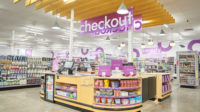Value, consumer savings drive growth for club stores
Private label brands help drive shopper loyalty within channel

Image courtesy of BJ’s Wholesale Club Inc.
Author of popular children’s books including “Stuart Little” and “Charlotte’s Web,” American writer E.B. White is quoted for saying, “It is easier for a man to be loyal to his club than to his planet — the bylaws are shorter, and he is personally acquainted with the other members.”
Although being part of a club can invite a sense of camaraderie and shared understanding, when it comes to club store membership, belonging can encourage a sense of loyalty by offering members value shopping experiences.
“Club stores operate on a membership basis, which inherently fosters loyalty,” says Sujeet Naik, senior research associate at Coresight Research, New York. “Consumers pay an annual fee, encouraging them to shop more frequently to maximize their investment.”
Naik adds that the value proposition presented by warehouse clubs — one of offering lower average costs for each item through bulk buying — is resonating with consumers in the current macro backdrop.
“Club stores often have lower prices compared to traditional supermarkets due to their ability to negotiate better deals with suppliers and pass on the savings to customers,” Naik explains. “Many club stores feature their own private label food and beverage brands, which are often comparable in quality to national brands but at lower prices.
“While the selection may be more limited than a traditional grocery store, club stores can offer a one-stop shopping experience for many household goods, including food and beverages,” he continues. “This can be a time-saver for busy consumers.”
Yet, Naik notes that warehouse clubs’ year-over-year revenue growth slowed down in its last fiscal year. “Amid the continued pullback in consumer spending — particularly in regard to high-ticket discretionary items — warehouse clubs have managed to maintain positive growth,” he says.
Further, Naik shares that Coresight data, published last year in the context of U.S. grocery, shows that food retailers (including supermarkets, convenience stores and specialized food stores) — which were responsible for more than three-quarters of the grocery market’s 2022 sales — will remain the dominant channels for purchasing groceries in 2023.
“However, over the past few years, non-traditional grocery retailers have steadily siphoned sales from traditional food retailers, a trend we expect to continue moving forward,” Naik explains. “From 2017 to 2022, food retailers saw their share of total grocery market sales slip from 69.7% to 66.6% of sales, while major mass merchandisers increased their share from 18.4% to 19% of sales and major discount and dollar stores (retailers that offer discounted merchandise across multiple departments) inched up from 3.1% to 3.4% of sales. Major warehouse clubs saw the greatest jump in sales share, moving from 8.7% to 10.9% of sales.”
Several factors are contributing to this shift, Naik notes.
“Mass merchandisers and warehouse clubs typically offer goods at lower prices than conventional supermarkets, making them more attractive to value-oriented shoppers,” he says. “Additionally, they offer a comprehensive product selection, including grocery, clothing, electronics and home offerings, creating one-stop shops that appeal to consumers who want to save time and money by consolidating their shopping trips.
“We expect the trend of food retailers losing share to non-traditional channels will continue as various large, well-capitalized alternative grocers, such as Walmart, increase competition via lower prices and significant operational investments facilitated by scale efficiencies,” Naik continues. “While large pure-play grocers can endure the price investment involved with the factors discussed above, we believe regional supermarkets will be unlikely to match their larger peers’ investments, causing them to lose customers and eventually exit the market.”
As far as which beverages are faring the best in club stores, Naik notes that Coresight Research doesn’t have detailed data, but he thinks that bottled water, soft drinks, juices and alcohol beverages tend to fare particularly well.
“Since club stores are built around buying in bulk, these frequently consumed drinks with discounted prices are a perfect fit, especially for families or those who entertain often,” he concludes.
Looking for a reprint of this article?
From high-res PDFs to custom plaques, order your copy today!






